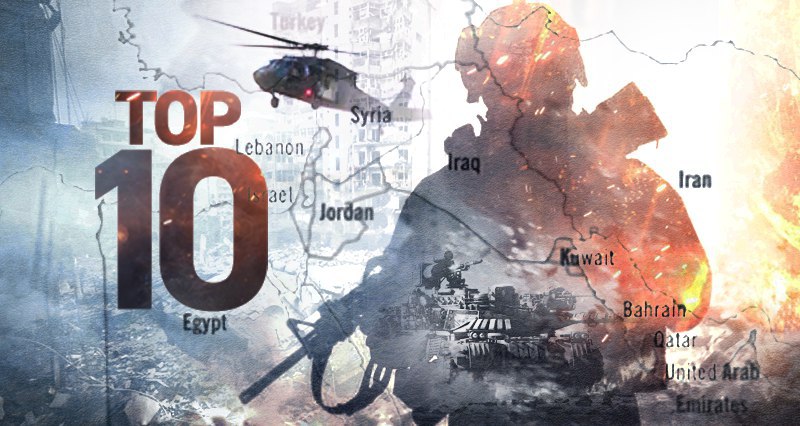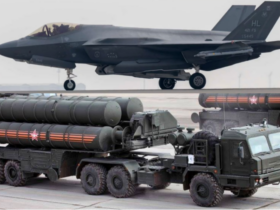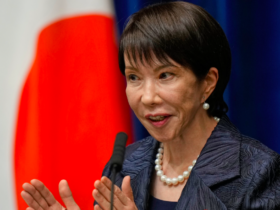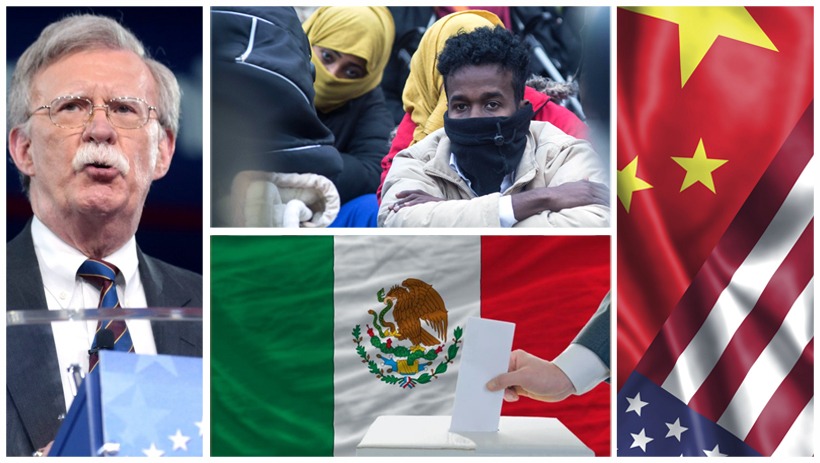Details of the agreement between Venezuela and Russia.
Details of the agreement between Venezuela and Russia.
By Leonel Retamal, from Caracas, Venezuela
“Knowing that we have a friend like Russia, knowing that Russia is watching over what happens in Venezuela when we have United States ships in the vicinity of our shores, and that Putin ratifies the agreement, is a very powerful signal, a very strong message that we Venezuelans receive with great joy,” stated international analyst Sergio Rodríguez, visiting Moscow.
And viewed this way, it is more than a signal. These are concrete facts. The first United States attack against vessels in the Caribbean occurred on September 2, and on the 30th, the National Assembly approved in second reading the Treaty of Strategic Association and Cooperation with Russia. The initial signature had been affixed on May 7, 2025, in Moscow by both presidents.
Five months later, on October 7, Venezuela’s Official Gazette published a 25-article document consolidating more than two decades of political, economic, and military alliances.
From that point forward, protocol acts—such as delivery to the Russian ambassador in Caracas, approval by the Russian Duma on October 22, and official communications between both states—formally sealed an association projecting binational cooperation for the next ten years. On October 27, President Putin ratified the Treaty as Federal Law.
Russian Deputy Foreign Minister Sergey Ryabkov declared that the agreement’s entry into force was “very important in the current circumstances, in which Venezuela faces unprecedented pressure, including direct military pressure from the United States.” Foreign Minister Sergei Lavrov expressed Moscow’s solidarity with Caracas “against the backdrop of growing external threats and interference attempts.”
Critical moment
For Venezuela, formalization arrives at a critical juncture. Although the government projects GDP growth near 9% in 2025, the country continues to be affected by high inflation, inequality, and a labor market dominated by informality. Recovery depends almost entirely on the petroleum industry, which reached 1.1 million barrels daily, still far from historical levels.
On the diplomatic front, Caracas faces frequent challenges, and militarily, more than 10,000 U.S. soldiers off its coasts, 12 destroyers—including the world’s largest aircraft carrier—thousands of missiles, and even a nuclear submarine.
While the agreement includes military matters, it is comprehensive, addressing economic, social, technological, and financial issues, among others.
Rejection of unilateral sanctions
Both governments commit to coordinating positions in international forums, and in Article 3, the parties “categorically reject unilateral coercive and restrictive measures (sanctions), including those of an extraterritorial nature, which constitute a violation of the UN Charter.” The document establishes that both nations “will not support or join unilateral coercive measures” against each other.
Vladimir Putin emphasized that this strategic association “will create a solid foundation for expanding multifaceted ties” between the two countries, while Maduro described the relationship as part of a “second independence process” for Venezuela. According to Kremlin spokesman Dmitry Peskov, “the agreement consolidates the high level of Russian-Venezuelan relations and establishes the basic principles and guidelines for future long-term cooperation development.”
Energy cooperation
The economic core of cooperation lies in the energy sector. Through joint ventures such as Petromonagas, Petrovictoria, and Petromiranda, Russia participates in Venezuelan heavy crude production.
Following the cutoff of U.S. supplies due to sanctions against the South American country, Venezuela began importing oil from Russia to use as diluent for extra-heavy crude from the Orinoco Belt. From March to October 2025, more than seven million barrels of Rosneft oil were delivered to the country, the first volume of such magnitude in six years.
Russian supplies reached 69,000 barrels per day in September, according to specialized energy media, completely replacing U.S. shipments that ceased after the Trump administration revoked Chevron’s license. “Russian fuel proved to be cheaper and of higher quality than the Iranian condensate Venezuela had been purchasing previously,” noted analyst Rory Johnston of Commodity Context. “Sanctions are forcing these producers to ‘embrace’ each other,” the consultant suggests.
Bilateral trade between Venezuela and Russia reached approximately $270 million in 2024, a 70% increase over the previous year. Russia has diversified its export range to Venezuela by supplying high-tech goods and mineral products. Venezuela was the third-largest importer of Russian wheat in the Latin American region in 2024.
Moscow supplies Venezuela with industrial equipment, automobiles, pulp, fertilizers, and other chemical industry products, while purchasing food (rum, fruits, cocoa), as well as marble and granite.
Independent financial infrastructure and the MIR route
The agreement defines an agenda to create financial and logistical infrastructures beyond the reach of Washington and Brussels. Article 12 establishes that “the Parties shall contribute to the formation of an independent Russian-Venezuelan financial infrastructure.” The Russian MIR payment system is already operational in part of Venezuela’s banking system, enabling transactions that bypass Western networks.
Article 13 contemplates “the construction of transportation and logistics infrastructure resistant to external restrictions.” Currently, Conviasa operates two monthly flights connecting Caracas with Moscow, primarily transporting Russian tourists who purchase vacation packages to Margarita Island, where the MIR system has greater presence.
Technological support
In the space sector, Article 15 contemplates “implementation of the GLONASS ground station deployment project.” The SS1-S station, installed at the Captain Manuel Ríos Aerospace Base in El Sombrero, Guárico state, was inaugurated on July 9, 2025.
The GLONASS system, Russia’s alternative to U.S. GPS, will strengthen geolocation and satellite monitoring services. Dmitry Bakanov, director of Roscosmos, declared that GLONASS is “a reliable alternative to other global navigation systems.” The system will facilitate terrestrial, maritime, and air navigation, precision agriculture, and monitoring of petroleum and industrial infrastructures.
Kalashnikov and the Wagner Group in Venezuela
On the military front, the Strategic Association Treaty signed between Venezuela and Russia on May 7, 2025, formalizes defense cooperation. Article 14 establishes that “the Parties will carry out technical-military cooperation with a view to reinforcing defense capacity.” Since 2005, Venezuela has acquired Russian systems such as Sukhoi fighters, T-72 tanks, and S-300 anti-aircraft batteries.
One of the most emblematic projects is the Kalashnikov rifle plant in Maracay, inaugurated in July 2025 after nearly two decades of delays. The facility, built by Rosoboronexport within CAVIM (Venezuelan Military Industries Corporation), has four production lines for 7.62×39 mm ammunition for AK-103 rifles. According to Rostec, the plant “will produce up to 70 million cartridges annually.”
Wagner Group presence
At various times, agencies have accessed testimonies of Wagner personnel presence in Venezuela. This contingency is no exception, considering some reports of Russian aircraft arrivals, allegedly with Wagner members and weaponry.
The most documented report comes from Reuters in January 2019, during the presidential crisis following Juan Guaidó’s self-proclamation as interim president. The agency cited several sources indicating that private military contractors associated with the Wagner Group arrived in Venezuela to reinforce President Maduro’s security.
The governments of Russia and Venezuela have consistently maintained a position of denial or non-confirmation regarding the Wagner Group’s operational presence on Venezuelan territory. Kremlin spokesman Dmitry Peskov stated they had no “such information,” and the Russian ambassador of that time in Venezuela characterized the news as “deception”.
During the post-electoral protests of July 2024, videos and photographs circulated purportedly showing an official with a Wagner Group patch on Margarita Island. Fact-checking sites concluded there was “no confirmed evidence of Russian mercenaries on Venezuela’s streets”.
The only confirmed fact to date is the arrival of a Russian Ilyushin Il-76TD transport aircraft with registration RA-78765, operated by Aviacon Zitotrans, which landed in Caracas on October 26, 2025, according to Defense News and flight monitor Flightradar24. This is an aircraft linked to Wagner and sanctioned by the United States.
Its cargo was neither confirmed nor disclosed. Analysts estimate it could have transported up to 34 tons of material, potentially including portable air defense systems, air-to-air missiles, or spare parts for Russian-made fighters and air defense systems.
U.S. sources cited in media indicated that approximately 200 members of the group, now called Africa Corps (following Wagner’s integration into Russian forces after 2023), allegedly arrived recently in Caracas. Previously, the British Ministry of Defense confirmed in 2024 that Wagner-affiliated fighters were seen training Venezuelan security forces.
Available information comes primarily from journalistic reports from recognized agencies such as Reuters and Defense News, open-source intelligence analysis, and statements from anonymous or non-governmental sources.
In October 2025, documents obtained by The Washington Post revealed that Maduro sent a letter to Vladimir Putin requesting military assistance in light of the U.S. deployment in the Caribbean. Maduro requested repairs for Sukhoi Su-30MK2 aircraft, restoration of engines and radars, as well as acquisition of 14 missile systems. The president allegedly proposed a “medium-term three-year financing plan” through Rostec.
Multipolar Venezuela
The treaty also includes Russia’s explicit commitment to Venezuela’s aspiration to integrate into the BRICS bloc. Article 7 establishes that “the Russian Federation values positively the will of the Bolivarian Republic of Venezuela to join as a full member and cooperate closely in the BRICS mechanism.” Minister Sergei Lavrov wrote in March 2025: “We value Venezuela’s interest in deepening cooperation with BRICS.”
For Russia, pressured by Western sanctions, Venezuela offers a strategic platform in the hemisphere. Russian Parliament President Vyacheslav Volodin affirmed that the document “elevates Russian-Venezuelan relations to a fundamentally new level.” Putin and Maduro have met more than ten times since 2013. “Today, our relationship has reached the level of strategic partnership,” Putin declared in April 2025.
However, the model’s sustainability faces significant challenges. The Venezuelan economy remains fragile, primarily due to sanctions and fluctuations in the economic model transition toward one less dependent on oil. The Russian economy also faces pressure from Western sanctions, particularly following the designation of Rosneft and Lukoil on OFAC’s SDN list in October 2025.
As Maduro declared after Putin’s ratification: “Russia and Venezuela in practice are like this, more united than ever. The historical and strategic alliance is for peace, for development.”
And above all, the timing: the moment chosen was neither routine nor random, but rather a clear signal at a time when Venezuela faces, as it has stated, “the greatest threat in a century”.

















Leave a Reply